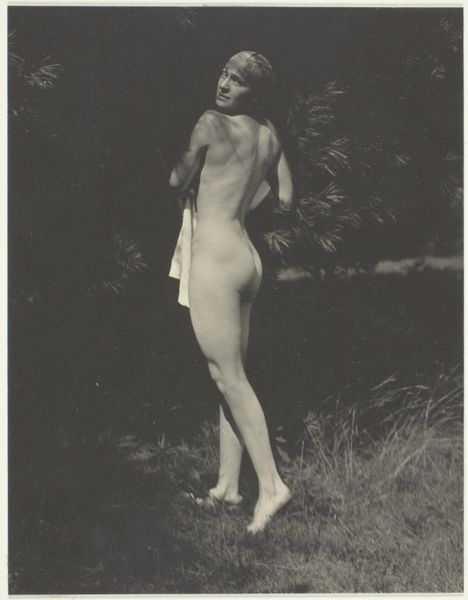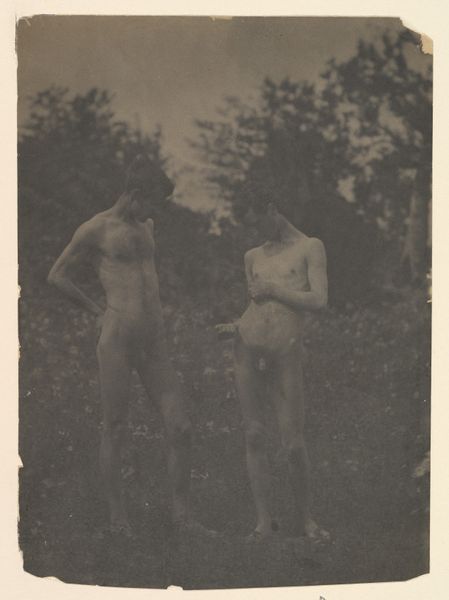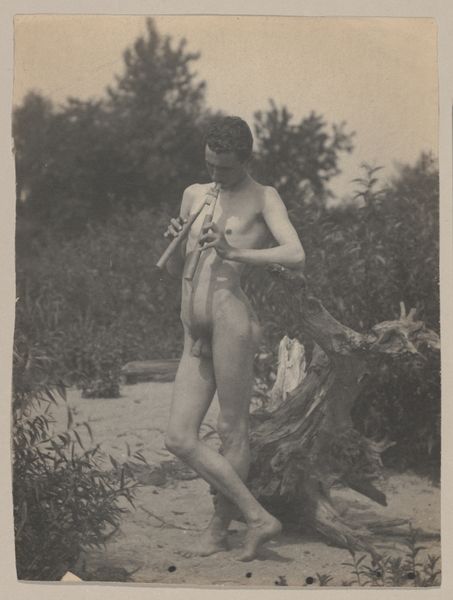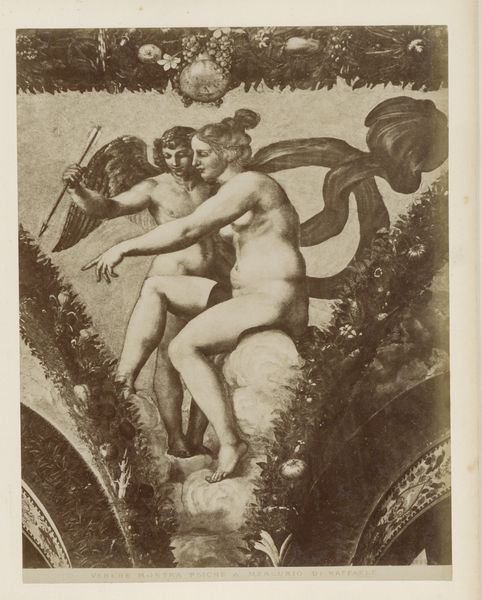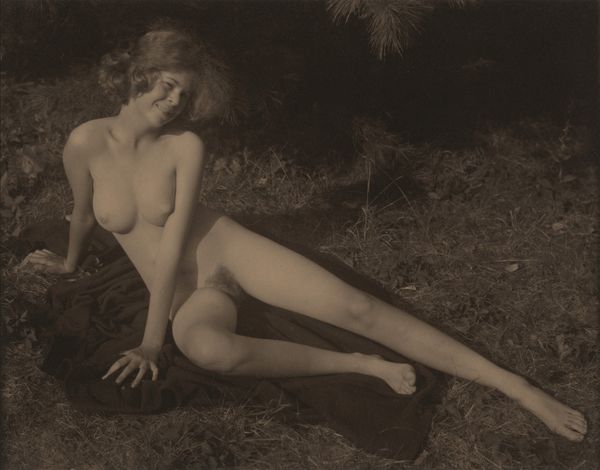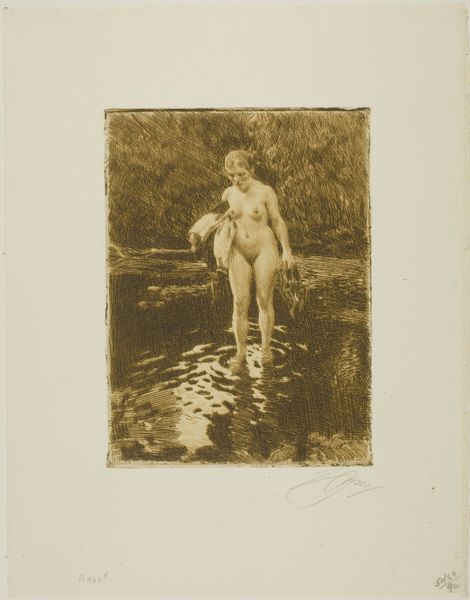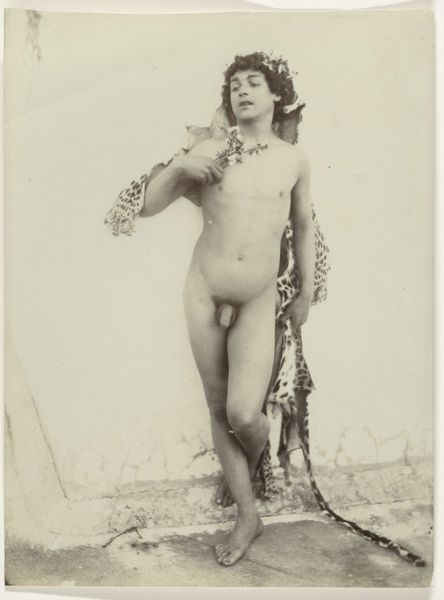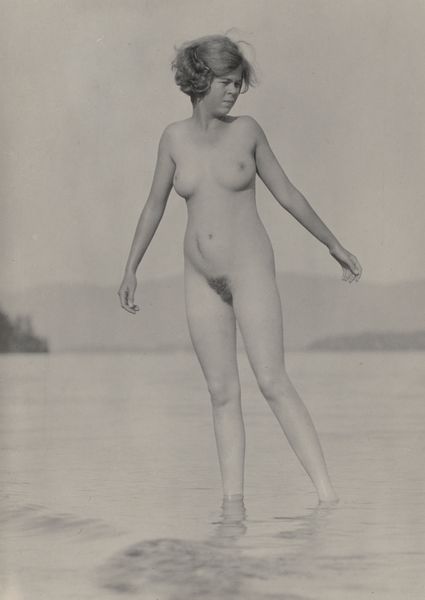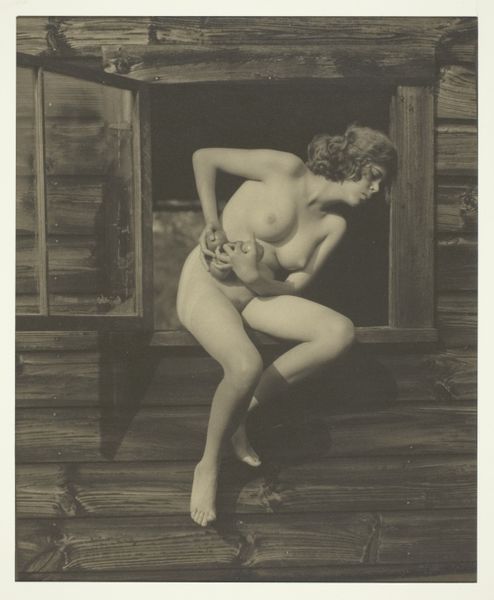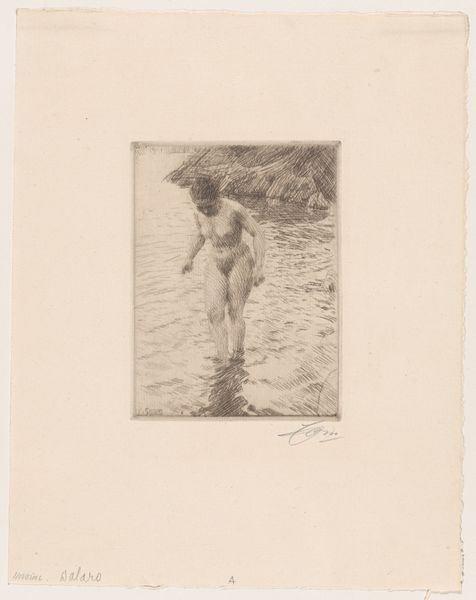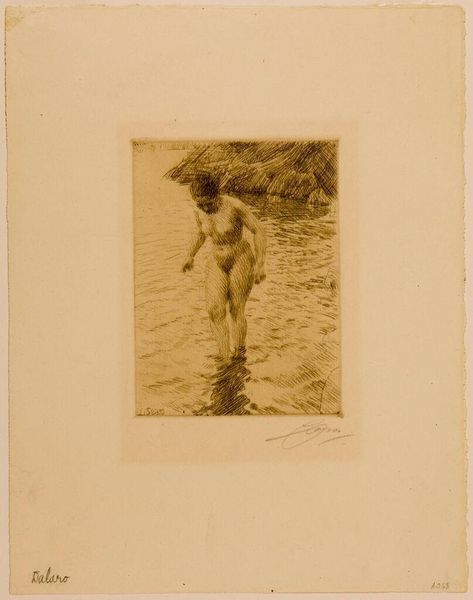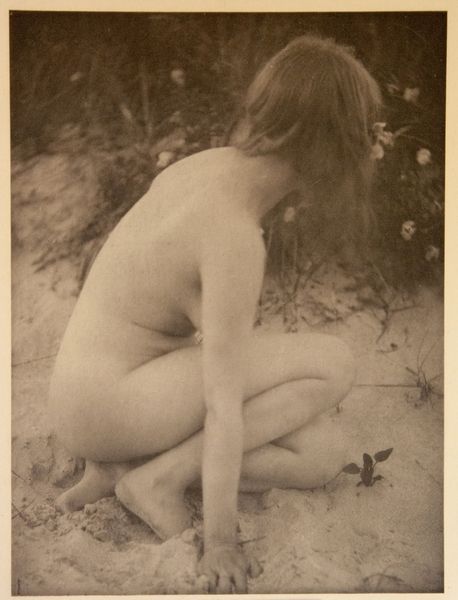
photography
#
portrait
#
print photography
#
pictorialism
#
photography
#
academic-art
#
nude
Dimensions: height 226 mm, width 168 mm, height 346 mm, width 260 mm
Copyright: Rijks Museum: Open Domain
Curator: Let's turn our attention to a photograph entitled "Twee naakte jongens op een tuinpad," or "Two Naked Boys on a Garden Path," possibly created around 1904 by Wilhelm von Gloeden. Editor: It's... evocative. The light, the textures, there's an undeniably romantic mood. A bit heavy on the details. Is it meant to be Titianesque? Curator: Indeed. Von Gloeden, a prominent figure in pictorialism, often evoked classical and allegorical themes in his works. This piece presents a romanticized, almost Arcadian, vision of youth and beauty. The soft focus enhances this dreamlike quality, lending an idealized character to his male subjects. Editor: Right, but that idealization is complicated, isn't it? Considering the social context of the era, photographing nude male figures wasn’t merely aesthetic; it was often freighted with assumptions about class and identity and the male gaze. I’d imagine the politics and reception around photographs of this kind at the time, were...turbulent? Curator: Precisely, and von Gloeden was aware of those implications. The performative nature of his models, how they posed, gives the picture a depth which we, as scholars of photographic material, can pick apart and explore the ways social taboos informed artmaking practices and photography specifically. Editor: The poses, also, give clues, right? The boy in the white headband seems almost like he’s acting at an effeminacy of ancient Greek portraiture. There's this play between staged artifice and what some critics have interpreted as something genuine: male intimacy and self-exploration outside a Western heterosexual norm. Curator: Yes, that interplay is key to understanding his work. The garden setting and artful framing of the figures give von Gloeden an out. He creates distance from a pure fetishizing of young, idealized men by rooting his subjects within a kind of neo-classicist framing that harkens back to a pre-sexual understanding of male comradeship and youth. This framing can also, problematically, conceal some pretty uncomfortable predatory aspects that defined his approach to image making. Editor: This dialogue itself—between artful, classicizing themes and undercurrents of both desire and class power dynamics—feels deeply characteristic of turn-of-the-century cultural attitudes, don’t you think? Thanks for sketching out von Gloeden's world! Curator: The pleasure was all mine. The work is never really done in figuring it all out, but the discussion will endure.
Comments
No comments
Be the first to comment and join the conversation on the ultimate creative platform.
